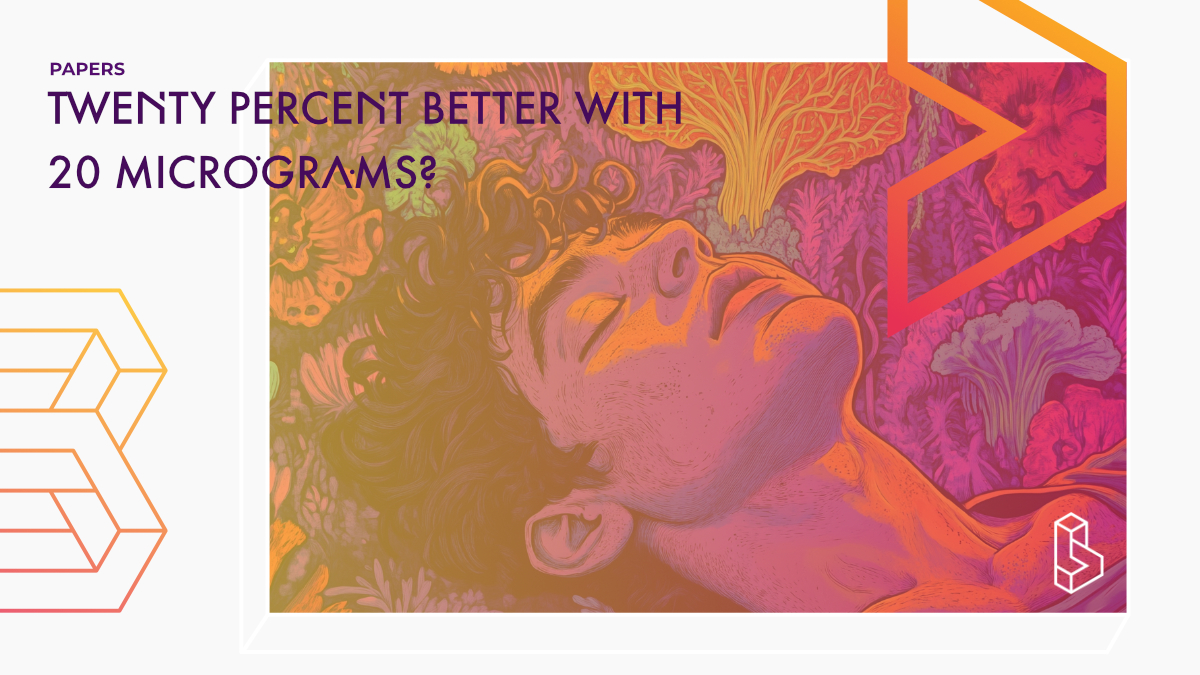This qualitative study (n=198) of opinions on microdosing found that they were generally well-tolerated and were used for therapeutic or enhancement purposes. The study analysed 32 videos and the self-report reactions to those videos.
Abstract of Twenty percent better with 20 micrograms?
“Background: Psychedelic microdosing is the trending practice of using tiny repeated doses of psychedelic substances to facilitate a range of supposed benefits. With only a few published studies to date, the subject is still under-researched, and more knowledge is warranted. Social media and internet discussion forums have played a vital role in the growing visibility of the microdosing phenomenon, and the present study utilized YouTube contents to improve comprehension of the microdosing practice as well as the social interactions and discussions around microdosing.
Methods: Microdosing self-disclosure in YouTube videos and their following comments were qualitatively analyzed by inductive thematic analysis. Various software was utilized to enable gathering and sorting relevant data.
Results: Microdosing of psychedelic substances, primarily LSD and psilocybin, was used for therapeutic and enhancement purposes, and predominantly beneficial effects were reported. Many different applications and outcomes were discussed, and therapeutic effects for depression appeared especially noteworthy. Intentions for use were recognized as an influencing factor for the progression and outcomes of microdosing. The function of social interactions was mainly to discuss views on the microdosing phenomenon, strategies for optimal results, minimize risks, and share emotional support.
Conclusions: Potentially, microdosing could provide some of the same benefits (for certain conditions) as full-dose interventions with less risk of adverse reactions related to the sometimes intense experiences of higher doses. Microdosing may well also mean additional benefits, as well as risks, through the repeated exposure over extended periods.”
Authors: Martin Andersson & Anette Kjellgren
Summary of Twenty percent better with 20 micrograms?
Andersson and Kjellgren begin by introducing psychedelic microdosing as a trending practice involving the use of tiny repeated doses of psychedelic substances to facilitate various supposed psychophysiological benefits. The origins of microdosing are often attributed to James Fadiman and his 2011 book, though Fadiman himself credits the practice to Albert Hoffman, the inventor of LSD.
The authors note that while the effects of full doses of psychedelics have been extensively researched, the practice of using repeated minimal doses is still under-researched. They highlight that social media and internet discussion forums have played a substantial role in the growing visibility of the microdosing phenomenon. The researchers’ interest in microdosing was sparked partly by their previous study on drug discussion forums, which found that psychedelic microdosing was reported as a successful self-treatment for headache disorders.
Methods
Data Collection and Procedure
Find this paper
https://doi.org/10.1186/s12954-019-0333-3
Open Access | Google Scholar | Backup | 🕊
Cite this paper (APA)
Andersson, M., & Kjellgren, A. (2019). Twenty percent better with 20 micrograms? A qualitative study of psychedelic microdosing self-rapports and discussions on YouTube. Harm reduction journal, 16, 1-12.

